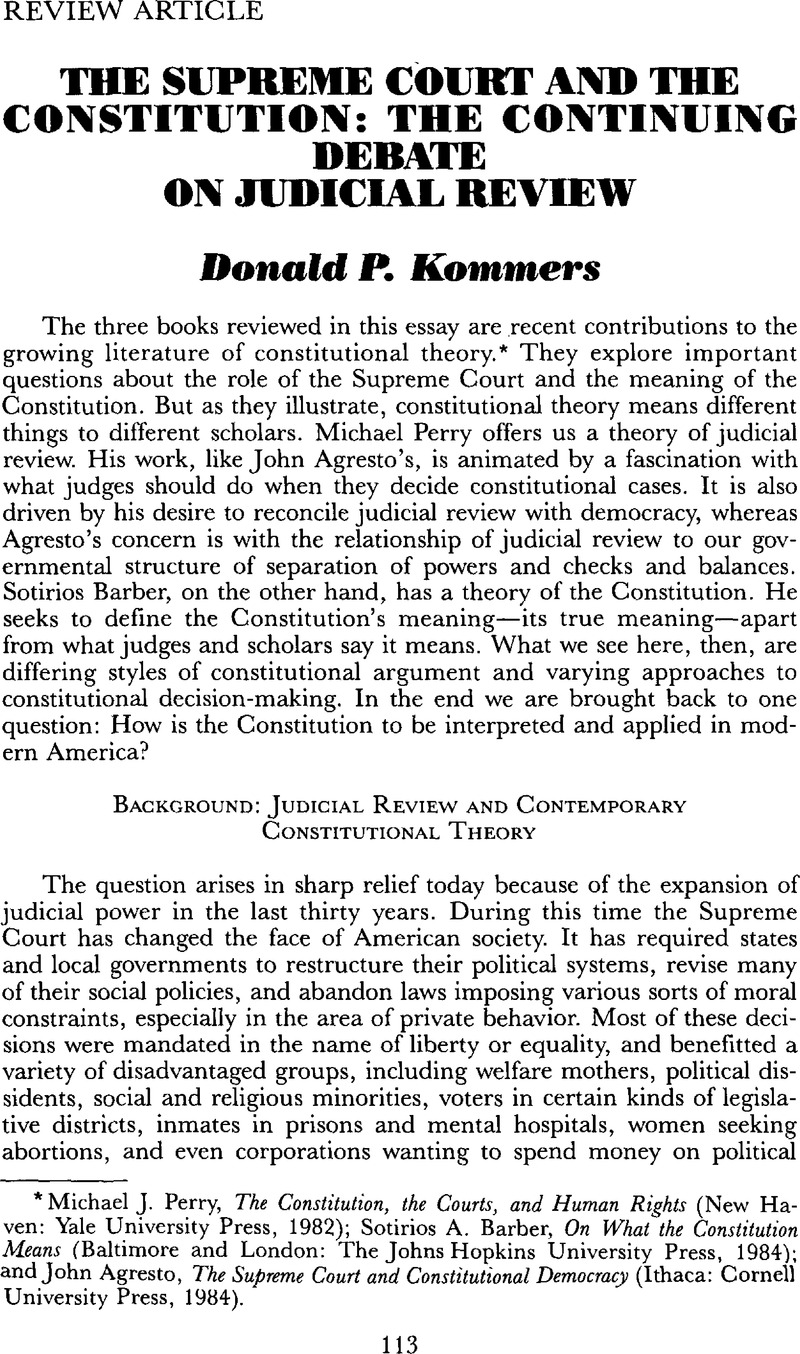Article contents
The Supreme Court and the Constitution: the Continuing Debate on Judicial Review
Published online by Cambridge University Press: 05 August 2009
Abstract

- Type
- Review Article
- Information
- Copyright
- Copyright © University of Notre Dame 1985
References
* Some might even object to the distinction drawn earlier between constitutional policymaking and interpretation. The objection has merit. For one thing, the Founders may have authorized noninterpretive judicial review by their deliberate use of broad language such as “privileges and immunities,” “due process,” and “equal protection”; if such review is sanctioned by original history why not call it interpretive review? Whether a judge is making policy or interpreting the Constitution also depends on his conception of the Constitution. If his conception of the Constitution includes more than its text, then in truth he may be said in some general sense to be interpreting the Constitution. Or he may uphold a value that he sees embedded in the Constitution as a whole rather than any one of its parts, in which case he may be said to be extracting a value from the text, and thus interpreting it. Ely, despite his orientation to process, is usually thought of as a noninterpretivist. But he could as easily be described as an interpretivist because he bases his well-known theory of judicial review on a principle gleaned from various amendments to the Constitution.
* One of these arguments is that because the people have ordained the Constitution, setting up the Supreme Court as its final interpreter, they have imposed judicial supremacy upon themselves. Another is the argument that judicial review is compatible with democracy when it upholds democratic values. The reverse side of these arguments, which also meets the sharp blade of Perry's scythe, stresses the antimajoritarian side of American government and accordingly defends the Supreme Court as one political actor among many in a system characterized more by interest group pluralism than by majoritarian democracy.
* The rights of persons in closed institutions, which the author takes up in his concluding chapter, are not the hard cases we have in mind. Our principal concern is with a government of free men and women, not the government of prisons or mental hospitals.
* See MacIntyre, Alasdair, After Virtue (University of Notre Dame Press, 1981)Google Scholar; Hauerwas, Stanley, A Community of Character (University of Notre Dame Press, 1981)Google Scholar, and Truthfulness and Tragedy (University of Notre Dame Press, 1977)Google Scholar; also MacIntyre, Alasdair and Hauerwas, Stanley, editors, Revisions: Changing Perspectives in Moral Philosophy (University of Notre Dame Press, 1983).Google Scholar
* See Komesar, Neil K., “Taking Institutions Seriously: Introduction to a Strategy for Constitutional Analysis,” The University of Chicago Law Review, 51 (Spring 1984), 366–446CrossRefGoogle Scholar. See also Rosenberg, Gerald N., “The Courts, Congress and Civil Rights: Comparing Institutional Capabilities” (Paper delivered at 1983 Annual Meeting of the American Political Science Association, 09 1–4, 1983).Google Scholar
- 3
- Cited by


